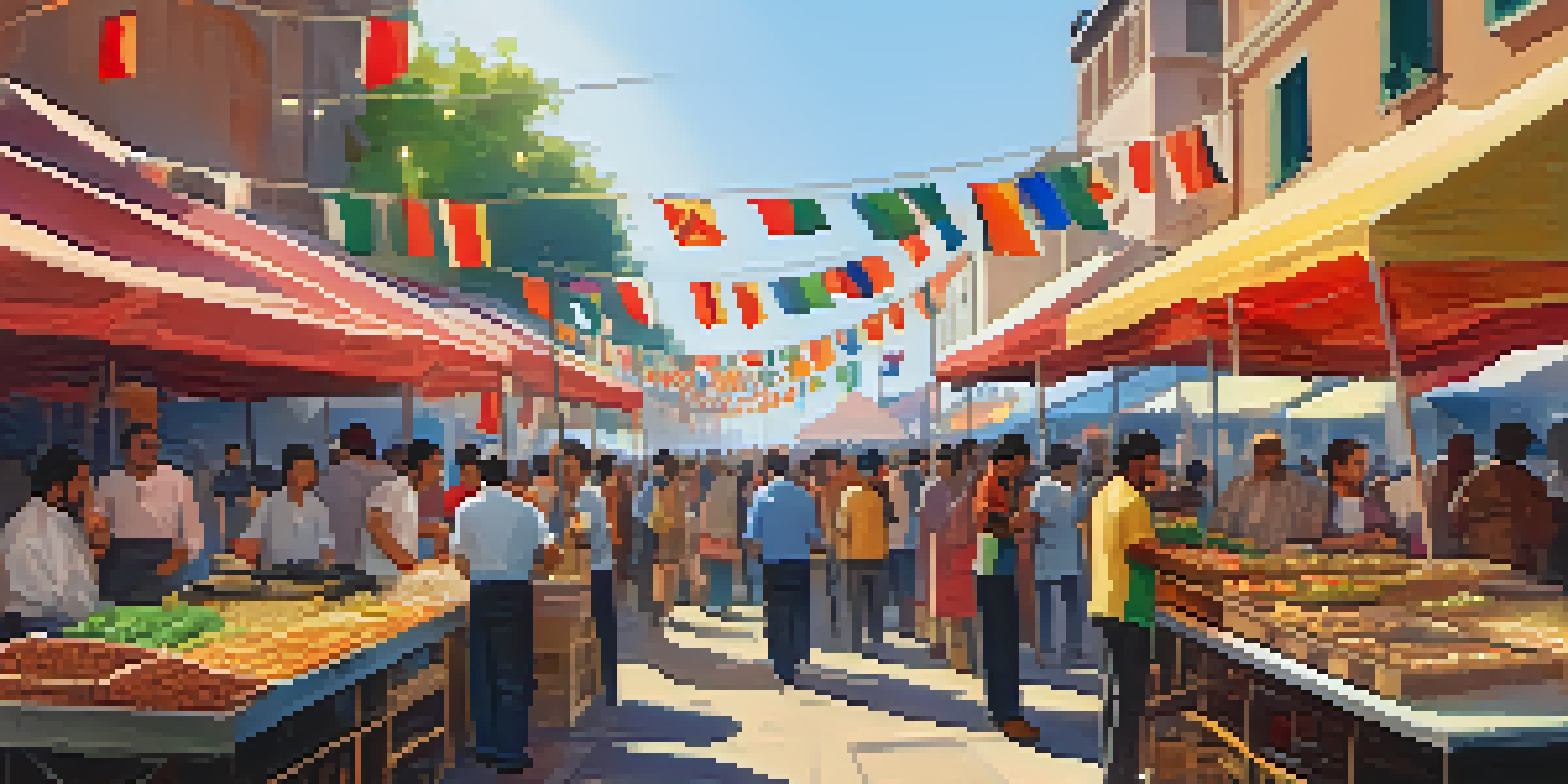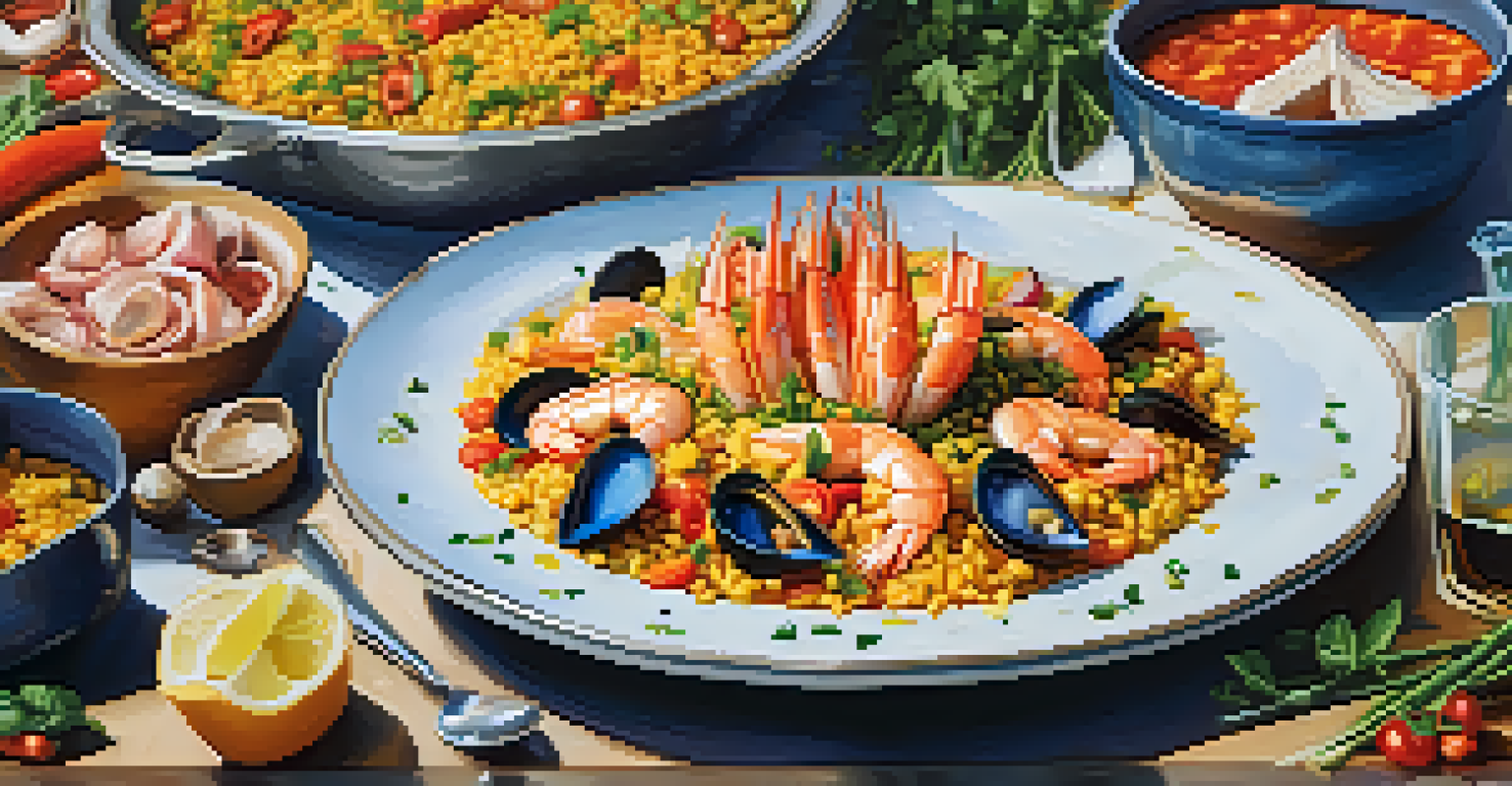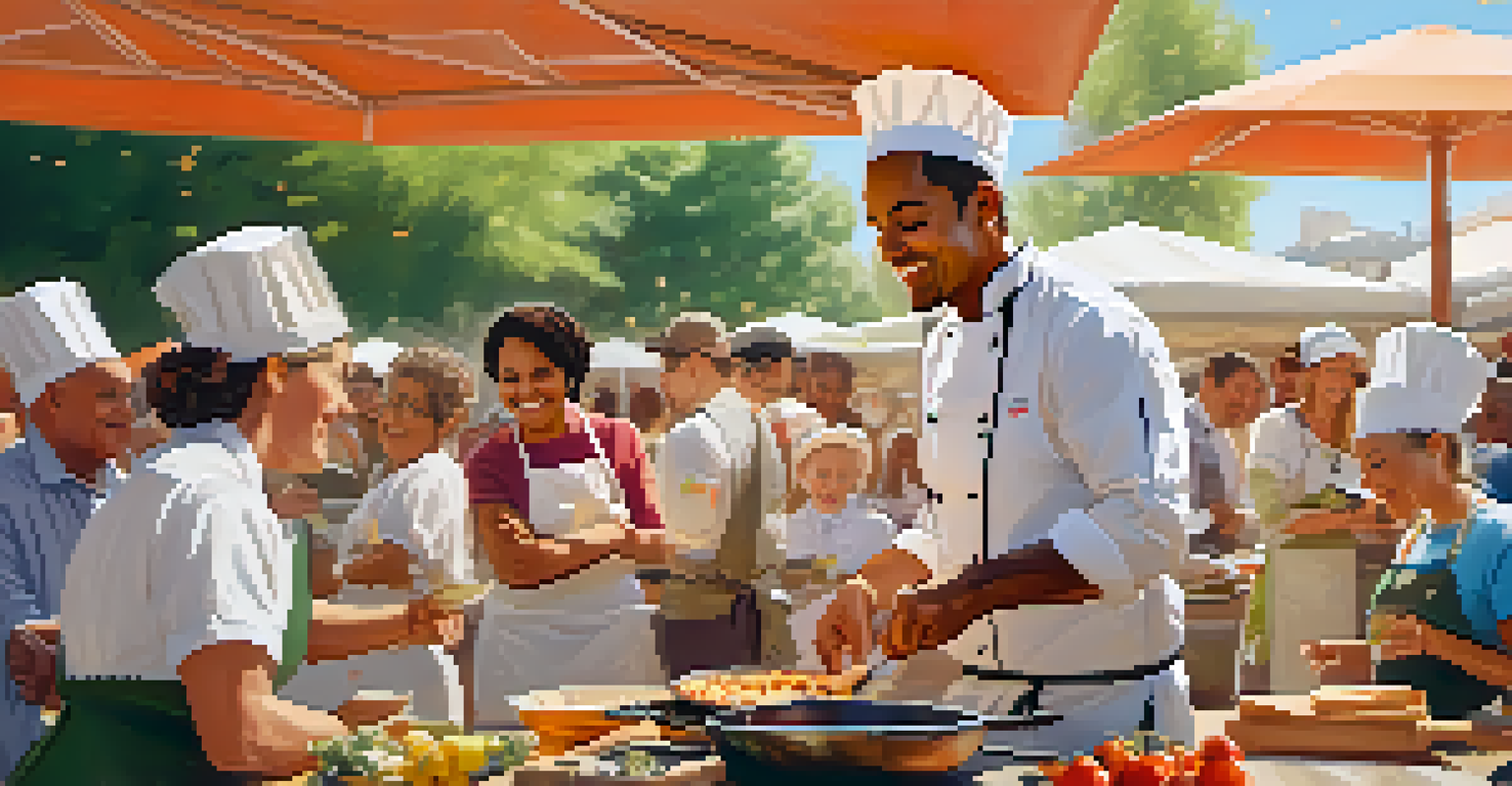Culinary Art: Food Festivals Celebrating Culture and Flavor

Food Festivals: A Feast for the Senses
Food festivals are vibrant celebrations that bring together diverse culinary traditions, allowing attendees to experience a feast for all the senses. From the sizzling sounds of street food vendors to the aromatic spices wafting through the air, these events create an immersive experience. They offer more than just food; they foster community, cultural pride, and connection among attendees, making them feel like part of a larger story.
Food is our common ground, a universal experience.
Imagine walking through a bustling marketplace filled with colorful stalls, each representing a unique cultural heritage. The sights, sounds, and tastes blend to create an unforgettable atmosphere. This sensory overload not only delights your palate but also educates you about the different traditions and histories behind each dish. It's a reminder of how food can bridge gaps between communities and celebrate our shared humanity.
Ultimately, food festivals are about more than just eating; they are about experiencing the heart and soul of a culture. They invite you to step outside your comfort zone, try new flavors, and appreciate the artistry involved in cooking. Whether you’re savoring spicy tacos or delicate sushi, each bite tells a story that connects you to a world beyond your own.
Cultural Heritage on a Plate
At food festivals, every dish is a representation of cultural heritage, often passed down through generations. These culinary traditions reflect the unique histories, ingredients, and cooking methods of different communities. For example, a simple bowl of pho can tell you about Vietnam's agricultural richness and its history of trade and migration.

Food becomes a canvas where cultures paint their stories, using flavors that evoke memories and traditions. Attendees not only enjoy the food but also engage with the narratives behind it, learning about the significance of certain ingredients and recipes. This cultural immersion fosters appreciation and respect for diversity, highlighting how food can be a powerful medium for storytelling.
Food Festivals Celebrate Diversity
Food festivals bring together diverse culinary traditions, allowing attendees to experience unique flavors and cultural stories.
By tasting these authentic dishes, festival-goers gain insight into the values and practices of various cultures. It’s a delicious way to explore differences and similarities, reminding us that food is a universal language that everyone can understand. This connection through culinary art enriches our lives and broadens our perspectives.
Signature Dishes: Icons of Identity
Every culture has its signature dishes that serve as icons of identity. These dishes often symbolize pride and heritage, becoming synonymous with a particular culture. For instance, paella in Spain or curry in India are not just meals; they embody the history, geography, and the spirit of their people.
Eating is a necessity, but cooking is an art.
During food festivals, these signature dishes take center stage, inviting people to indulge in flavors that are deeply rooted in tradition. Chefs often share the stories behind these meals, providing insights into their preparation and the cultural significance attached to them. This creates a deeper appreciation for the effort that goes into making these cherished recipes.
Exploring these iconic dishes allows attendees to connect with the culture on a personal level. It’s like tasting a piece of history, where every bite evokes a sense of belonging and understanding. Festivals not only celebrate these dishes but also keep the culinary traditions alive for future generations.
The Role of Local Ingredients in Culinary Festivals
Local ingredients are the backbone of culinary artistry, especially at food festivals. Many chefs proudly highlight their use of fresh, locally sourced produce, emphasizing sustainability and community support. This focus on local ingredients not only enhances flavor but also strengthens the connection between the land and the food we eat.
By showcasing regional specialties, festivals encourage attendees to appreciate the uniqueness of local agriculture and its impact on culinary practices. Imagine tasting a dish made with tomatoes harvested just hours earlier; the freshness can elevate the entire experience. This approach not only supports local farmers but also promotes environmental sustainability.
Local Ingredients Enhance Flavor
The use of fresh, locally sourced ingredients not only boosts flavor but also fosters community pride and sustainability.
Moreover, the use of local ingredients fosters a sense of pride within the community. When people gather to celebrate and enjoy food made from their region’s bounty, it reinforces local identity and traditions. It’s a reminder that the best meals often come from a place of deep-rooted connection to the land and its offerings.
Cooking Demonstrations: Learning Through Experience
One of the most exciting aspects of food festivals is the opportunity to engage in cooking demonstrations. Here, skilled chefs share their expertise and techniques, allowing attendees to learn directly from the masters. This interactive experience empowers participants to explore new culinary skills, inspiring them to recreate these dishes at home.
These demonstrations often go beyond just cooking; they include discussions about flavor pairings, ingredient selection, and the cultural significance of the dishes. Imagine standing in a bustling kitchen, captivated by the chef's passion as they explain how to craft the perfect risotto. This hands-on learning approach transforms the way people view cooking, making it accessible and fun.
As attendees participate in these demonstrations, they not only acquire new skills but also build a deeper appreciation for the art of cooking. They leave the festival with a sense of accomplishment and the confidence to experiment in their own kitchens. It’s a beautiful cycle of sharing knowledge, creating community, and nurturing a love for culinary art.
Food Festivals: A Platform for Culinary Innovation
Food festivals are not just about celebrating tradition; they also serve as platforms for culinary innovation. Here, chefs and food artists experiment with new flavors, techniques, and presentations, pushing the boundaries of what we consider food. This spirit of creativity fosters an environment where new ideas can flourish.
Imagine biting into a fusion dish that blends elements from different cultures, like a sushi burrito or a kimchi taco. These innovative creations reflect the evolving nature of culinary art, showcasing how diverse influences can come together to create something entirely new. Festivals encourage attendees to embrace this creativity and rethink their culinary experiences.
Innovation Thrives at Food Festivals
Food festivals serve as platforms for culinary innovation, where chefs experiment with new flavors and techniques to inspire creativity.
Moreover, the excitement surrounding these innovative dishes can inspire future chefs and food enthusiasts. By showcasing new trends, food festivals play a crucial role in shaping the future of gastronomy. They celebrate not only the heritage of food but also its potential for growth and transformation.
The Impact of Food Festivals on Local Communities
Food festivals have a profound impact on local communities, serving as a catalyst for economic growth and cultural exchange. They attract visitors from near and far, providing a significant boost to local businesses, from restaurants to artisan shops. This influx of tourism creates job opportunities and fosters a sense of community pride.
Beyond the economic benefits, food festivals also act as a bridge between different cultures. They create spaces where people can come together to celebrate diversity, share stories, and build connections. This cultural exchange enriches the community, promoting understanding and collaboration among various groups.

In essence, food festivals help cultivate a vibrant local culture, where food becomes a tool for unity. By bringing people together through the love of food, these events create lasting memories and forge friendships that transcend cultural boundaries. It’s a beautiful reminder of how culinary art can enrich our lives and communities.